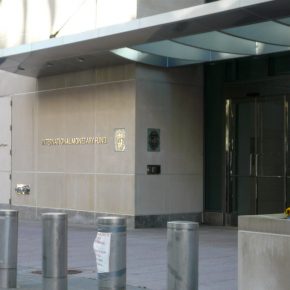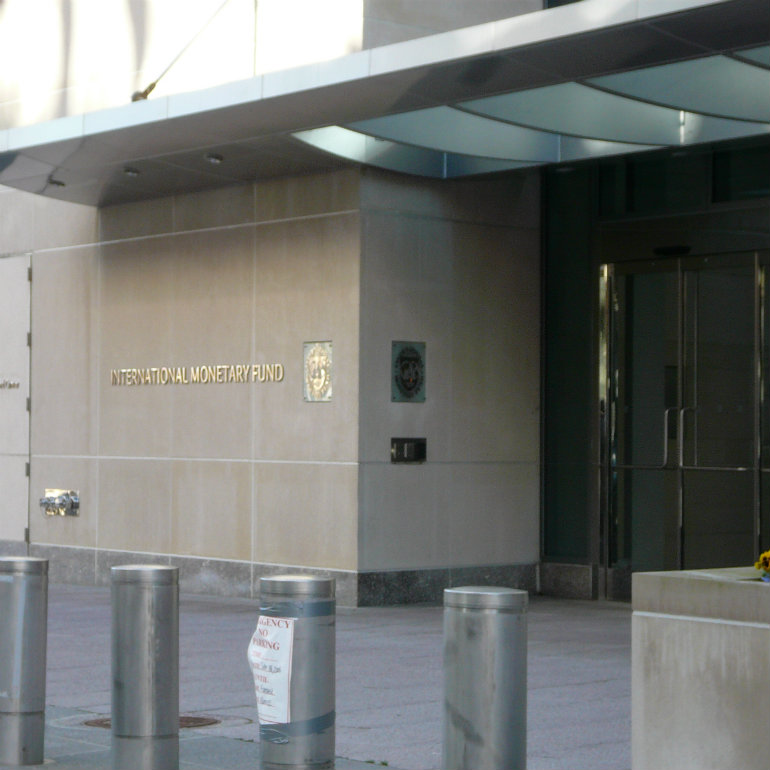Tydzień w gospodarce
Category: Trendy gospodarcze
Analyst in the Balkan Department at the Institute of Central Europe in Lublin, Poland

(E. Strathmeyer, CC BY-NC-ND)
In July the next round of talks between the International Monetary Fund and the Republic of Serbia will take place. IMF wants to review the progress of reform program agreed previously. Further IMF’s financial assistance depends on the review but it is already clear that efforts of the Serbian authorities are highly valued and Serbian leaders feel confident.
At the same time, consultations under Article IV of the Statute of the International Monetary Fund will also be carried out. The main goal would be to analyze the overall economic trends in the Republic of Serbia, the economic policies and measures taken to maintain stable relations in the economy, adjusting the balance of payments and further liberalization in foreign trade.
“The Fund-supported program is delivering positive results, underpinning macroeconomic management and structural reforms in Serbia. The economy continues to strengthen, supported by the authorities’ efforts to improve public finances, address structural weaknesses, and strengthen the financial sector. Employment is rising, inflation remains firmly under control, and public debt has started to decline,” IMF writes in its report, which enabled the Serbian Government to obtain about EUR850.8m of financial aid.
Nebojša Savić, President of the Council of the Governor in the Serbia’s central bank (NBS), claims that Serbian example remains one of the most efficient ones among the IMF sponsored programs. Both monetary and fiscal stability has been achieved and maintained. According to the IMF’s principles that these two factors constitute a fundament of further development of economy. They must, however, be followed by further reforms.
This time the IMF mission will overlook progress in the areas, which has been addressed over half a year ago. Biggest challenges remaining are: reform of public administration and restructuring of state-owned enterprises in strategic sectors of energy, mining and transport. Also judiciary requires further reforms.
So far, the Head of the visiting IMF mission, James Roaf, assessed that the budget results are excellent and all indicators point to a stable trend of growth of Serbia’s economy.
The Fund, however, is not the only one to overlook the future of the public sector. Serbian society historically has been often relaying on the state, and employment in state-owned companies have been rather common and highly valued as stable and relatively well-paid job. Today, with privatization half way through the doorstep and the public opinion skeptical towards neo-liberal reforms, the government needs to emphasize contradictory achievements in this field.
Although out of 500 public companies over 300 has been already privatized, commentators and media often mention three companies that, due to their size and significance, remain the focus of attention. These companies are Serbia Railways, Elektroprivreda Serbije (EPS) and Srbijagas.
As reported by a Serbian daily Politika the EPS, the largest enterprise in Serbia with 30,000 employees, EUR2.8m of revenues and taxes paid annually to the state treasury, has undergone several organizational changes. Now it’s operated by two separate companies. The main task was an employment by 5,000 persons till 2019. During the past year, this plan has been already surpassed with more than 2,000 instead of planned 1,517 workers that left the company.
EPS management does not expect any future problems in the strategy implementation, so it is expected that in 2017 the plan to reduce employment will continue. Dušan Bajatović, general manager of Srbijagas, has confirmed that also his enterprise will be reorganized in accordance with the third energy package, i.e. legal separation of production of electricity from its distribution. It has already been partially achieved by establishing Transportgas Srbija and Distribucijagas Srbija, but they are not yet acting independently.
Serbian Railways seem to have gone the longest way in implementing the agreement with the IMF. The Ministry of Building, Transport and Infrastructure reminds that the number of employees has been reduced by more than 3,000, and 1,090 kilometers of unprofitable railroads have been closed, a historic debt for electricity, amounting to about RSD5bn (EUR41.44m) has been settled and for the first time the assets of „Railways” have been registered. For decades the property of this post-Yugoslav giant was unclear, and so was its market status
The enterprise has been divided into three companies, one responsible for management of the infrastructure – Infrastruktura železnice Srbije, another for transport of goods – Srbija Kargo , and the third one responsible for transport of passengers – Srbija voz .
The final result of the reforms will depend on two factors. First is ability of the government of Serbia to create, or enable creation of work places for employees who will lose their jobs during the restructuring program under the wings of IMF. The experience of CEE from 1990s show that this is neither easy nor obvious, and with regard to Serbia, it might even not be achievable. Transformation that took place in the CEE at the beginning of 1990s faced different problems, different international conditions, different markets and different constellation of social forces than in today’s Serbia. So short term success can be followed by some significant tensions.
Secondly, Serbia might “export” its unemployed citizens abroad and in this way address and partially solve some of the social and economic problems. This also depends on the development of situation within the EU, which currently is being discussed.
Jan Muś is a lecturer at the Vistula University.

